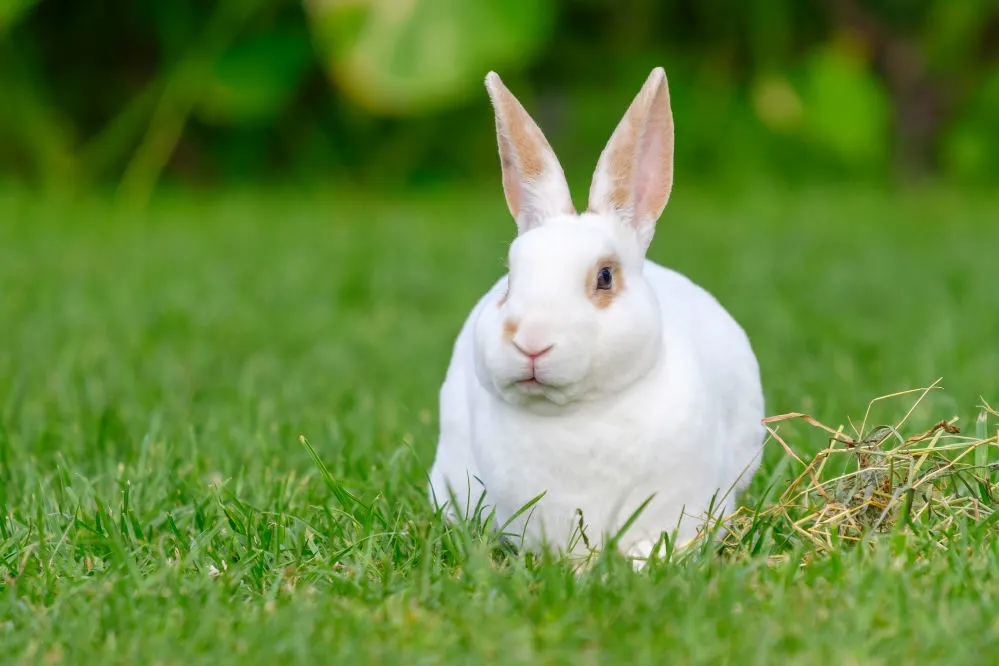You’ve just adopted a new baby bunny, but you’re worried about predators. How do you protect your precious bunny rabbit from ferocious attacks? Start by learning what animals eat rabbits so you know what critters to watch out for.
Bunnies are small mammals that are easy targets for larger species. Unlike wild rabbits, your indoor cuddle buddy will rely on you to keep it safe. Baby rabbits, specifically, are easy prey, but don’t feel overwhelmed just yet.
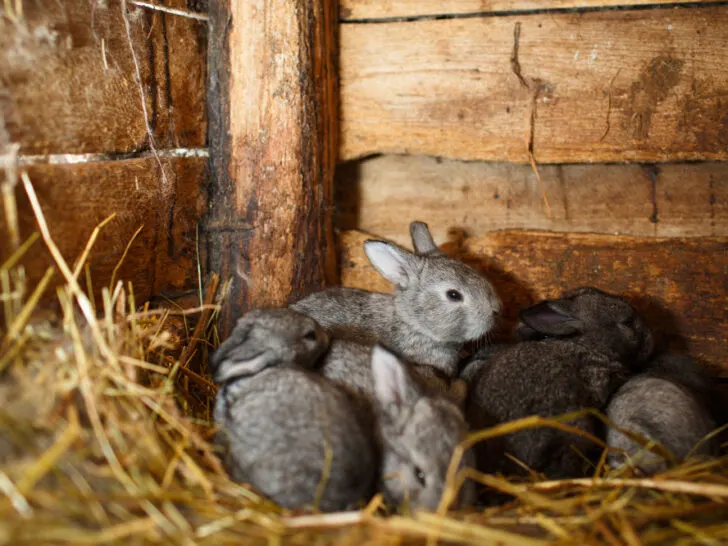
By the end of this post, you’ll be familiar with some of the worst and most common rabbit predators and how to keep your bun-bun safe. If you want to sleep peacefully knowing your rabbit is always safe, then keep reading.
Next Read: To learn more about these adorable pets, have a look at when baby rabbits open their eyes.
14 Most common rabbit predators
Let’s waste no more time and uncover some of the most common potential predators out there.
Golden eagle
The golden eagle is one of the most popular birds of prey in the Northern Hemisphere. These massive and dangerous birds have a wingspan of 5.9 – 7.5 ft (1.8 – 2.3 m), allowing them to be the fastest eagle species. They can attack at high speeds, and golden eagles are agile with extremely sharp talons and powerful beaks.
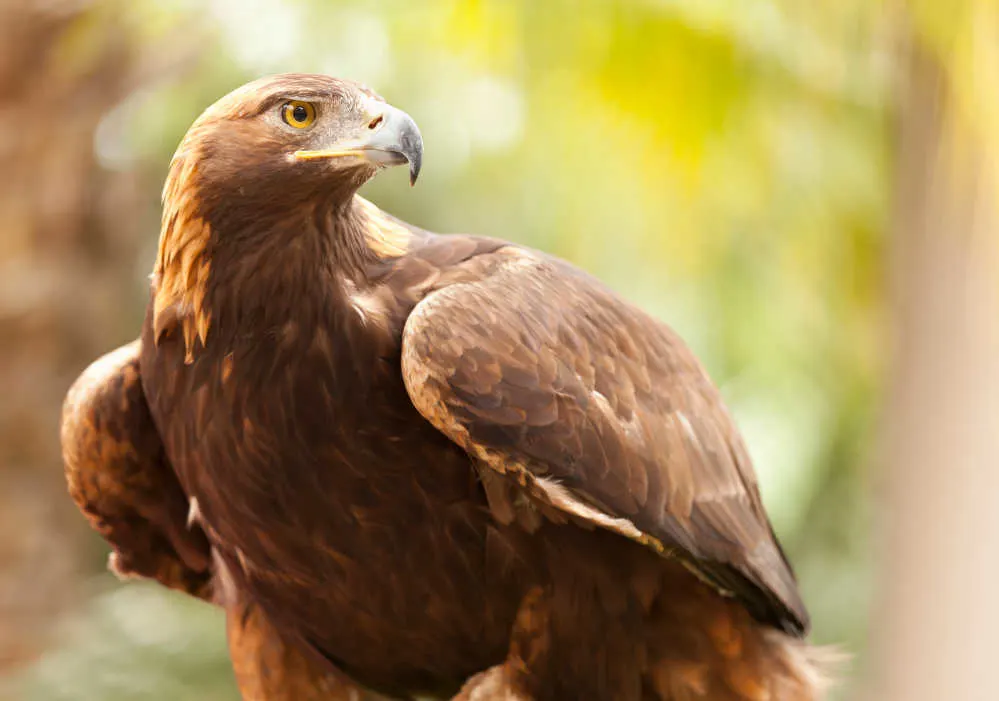
Most smaller animals can’t stand a chance against these opportunistic hunters. And sadly, for us passionate bunny owners, our adorable fur babies are one of this eagle’s primary food sources. They specifically hunt medium-sized rabbits, rodents, hares, birds, and reptiles.
You’ll spot an adult golden eagle by its dark brown feathers and golden sheen on the back of its head and neck.
Bald eagle
The bald eagle is yet another bird of prey to look out for. They’re common in North America and have brown bodies with white heads and tails. A bald eagle’s wingspan is about the same as a golden eagle’s but is not as fast as the latter.
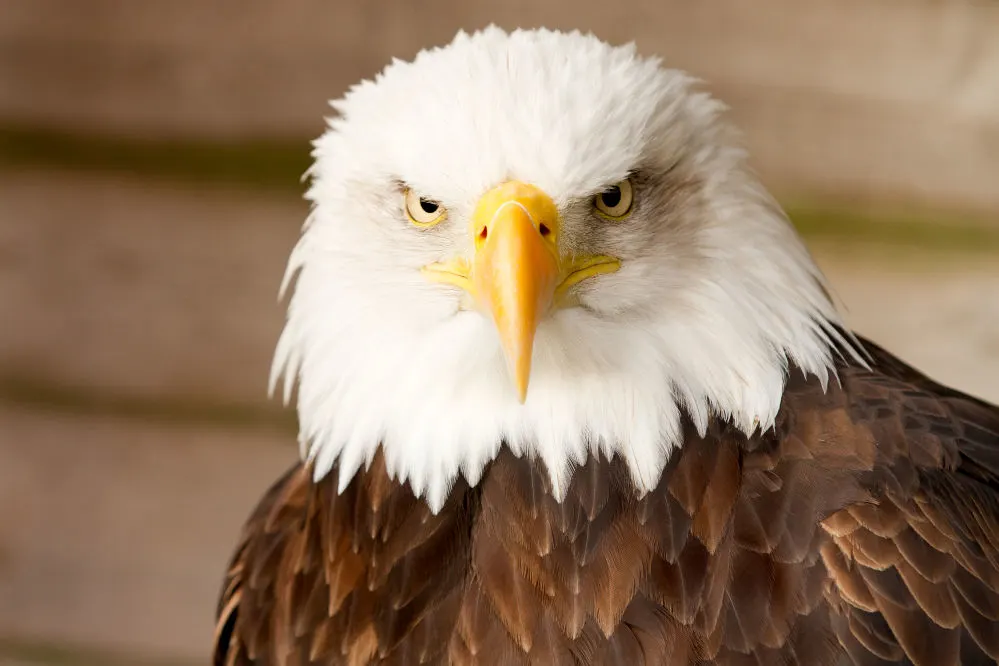
However, bald eagles have excellent vision, about eight times stronger than ours. Which means they can spot small animals incredibly quickly. They also have unfathomable grip strength and are one of the largest raptors in the world.
These strong birds hunt rabbits, snakes, waterfowl, turtles, and other smaller mammals like rodents.
Red-tailed hawks
The red-tailed hawk is a massive, sturdy raptor with short, red tails and strong feet. This bird of prey breeds throughout Northern America. Slightly faster than a bald eagle, it has an impressive wingspan of 3.2 – five ft (one – 1,5 m).
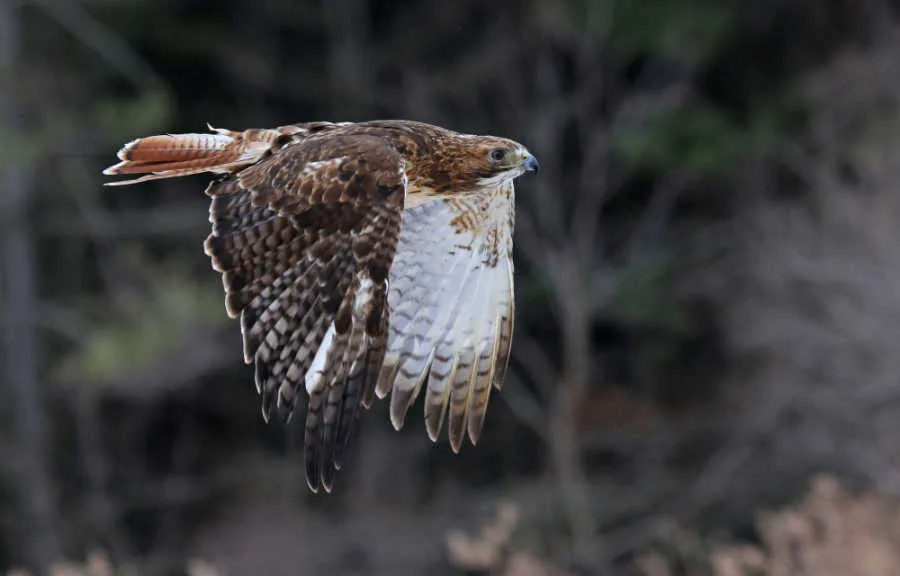
Red-tailed hawks are top predators stalking their prey with keen eyesight from tall perches. They target smaller mammals, birds, and reptiles in open fields, often near highways. Ground squirrels make up the main part of their diet but they won’t mind a tasty rabbit, rat, or snake.
African wild dogs
The African wild dog (painted dog) is a highly skilled hunter native to sub-Saharan Africa. This wild canine is one of the larger predators on this list and is often mistaken for hyenas. They weigh roughly 70 lbs (32 kg), stand at about 30 inches (76 cm) high, and can run as fast as 45 mph (72 km/h).
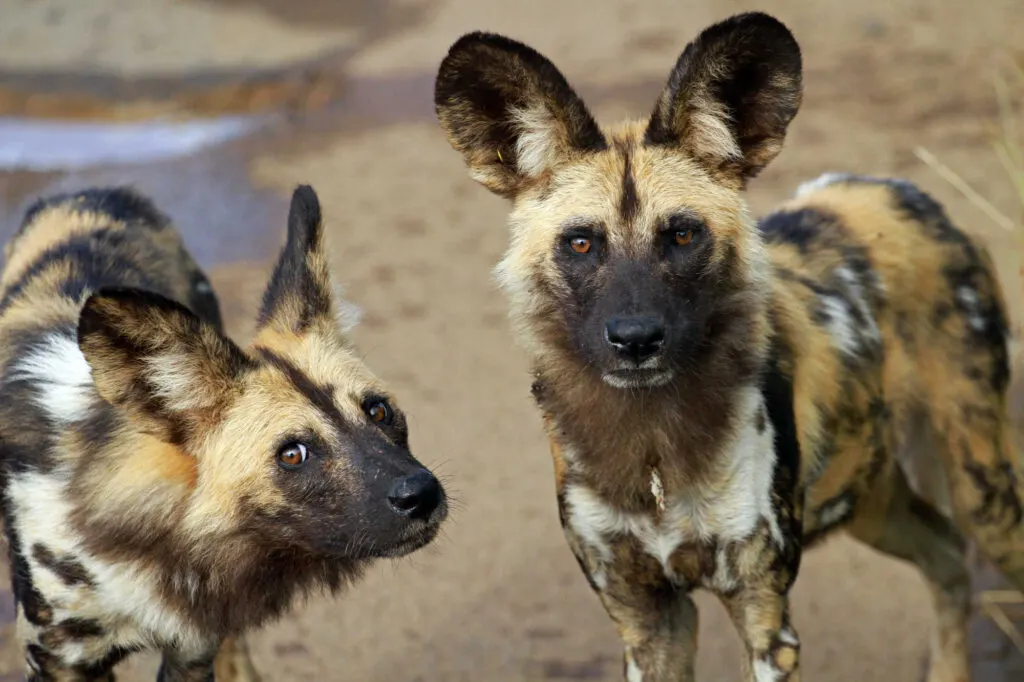
For reference, the fastest bunny in the world, a jack rabbit’s top speed ever recorded was 45 mph (72 km/h). These high-stamina hunters also have sharp teeth that support their highly carnivorous diets. Their meat-based diet includes antelopes, rats, birds, warthogs, rabbits, and just about anything that runs.
Large snakes
You’ll find giant snakes in almost all parts of the world. The Eastern Indigo snake is the largest in the United States. The Burmese, Indian pythons, rattlesnakes, boas, and pit vipers are other massive snakes from this region.
Rabbit meat is high on the menu for large snakes. Most of these snakes are only big enough to eat young rabbits, so mature bunnies are safer from becoming their next meal.
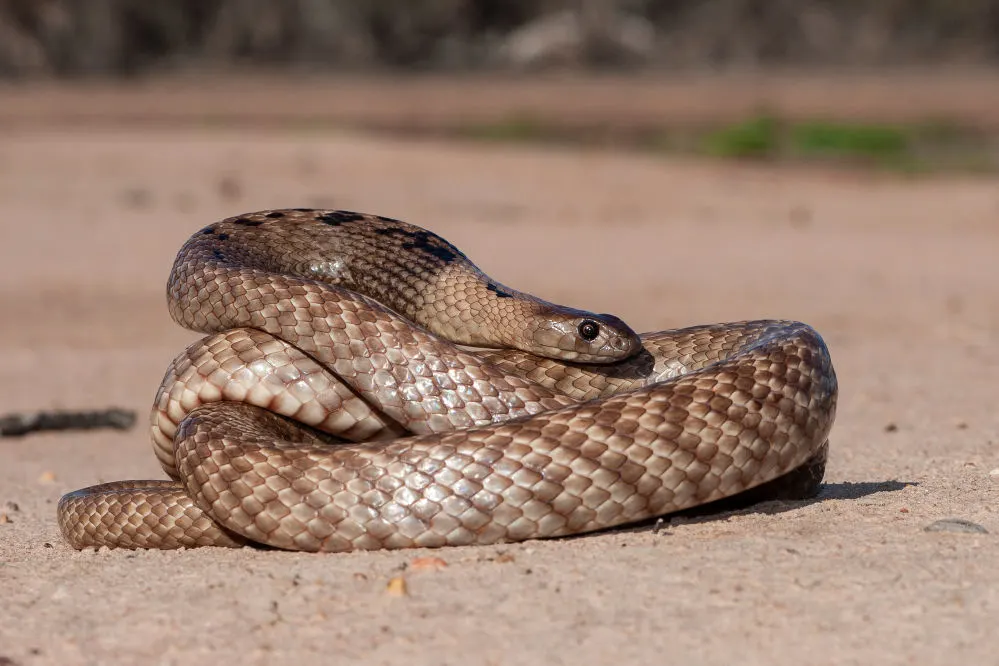
However, larger breeds like the Burmese and Eastern Indigo wouldn’t have trouble making a snack of an adult rabbit.
Domestic cats
The domestic cat needs no introduction. They are fellow animals in the pet kingdom that can get along with other furry family members. However, most people seem to forget that cats are natural predators who enjoy a good hunt from time to time.
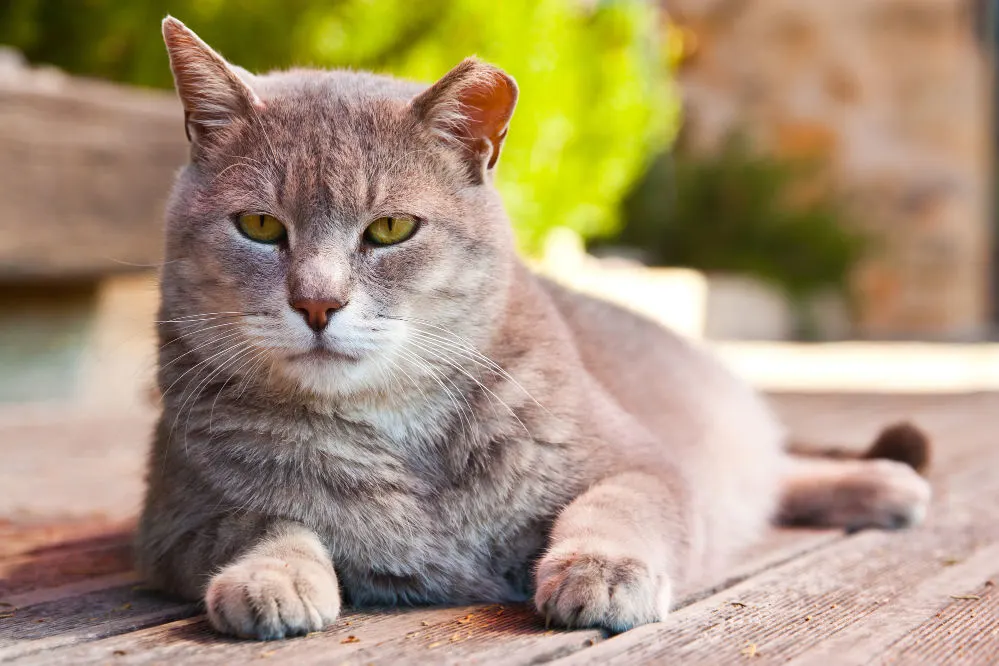
They’re such good hunters that they actually result in the extinction of small animals regularly. These small carnivorous animals do not only target mice or rats, but they’ll often go after baby rabbits too.
Well-fed house cats are notorious for preying on baby bunnies just for fun, slaughtering them in the most gruesome fashion. This does not mean you can’t have both as pets, though. These two pets can get along peacefully with proper introduction and excellent discipline.
Lizards
Komodo dragons are the largest species of lizard, weighing up to 154 lbs (70 kg) and reaching 9.8 ft (three meters) in length. Being so large, it makes sense why this animal would prey on small rabbits, rodents, water buffalo, and basically any meat.

Luckily, komodo dragons are only found on a few islands in Indonesia. However, medium-sized lizards, such as the monitor lizard, eat rabbits as one of their primary food sources.
Wild cats
Out of the cat family, wild, feral cats might be the most common predators of bunnies. We’ll focus on two types of wild cats as these roam urban areas: the African wild cat and the European wild cat. The African wild cat has a sandy gray coat with white stripes on its face and sides. In comparison, the European wildcat looks similar to a domestic tabby.
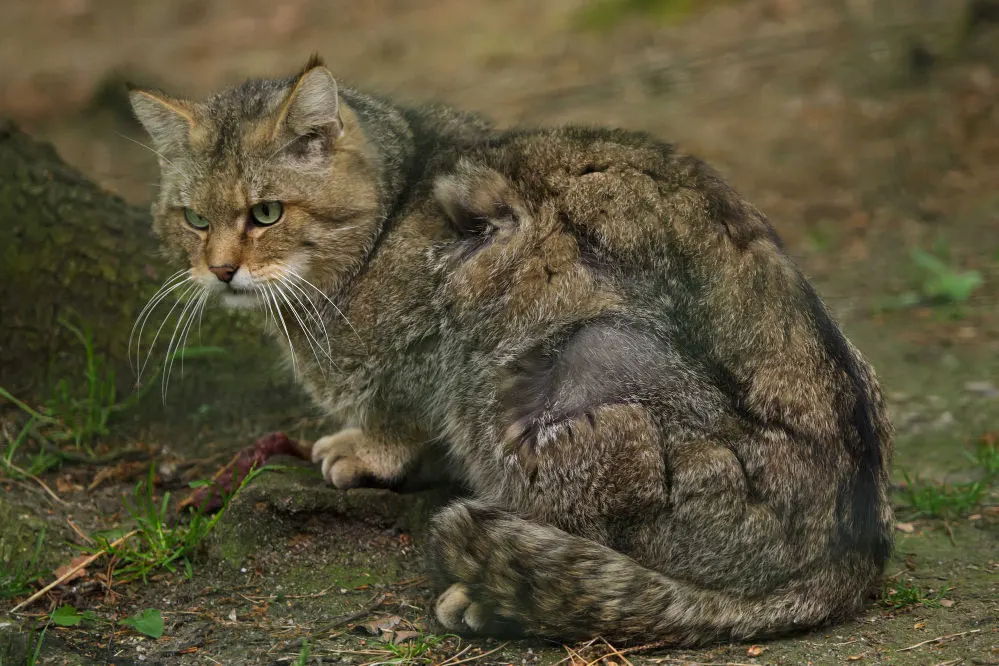
Regardless of their type, both medium-sized cats enjoy hunting and eating small prey animals like mice, rats, arthropods, and rabbits. As crepuscular animals with sharp claws, it’s a good idea to find out if any feral cats roam your area to ensure your bunny’s safety.
Great horned owl
The great horned owl, also known as the tiger or hoot owl, is a highly adaptable raptor native to the Americas. These owls are powerful and aggressive hunters, often preying on rabbits, snakes, hawks, and skunks. They have an intimidating yellow-eyed stare, a deep hoot, and long ear-like tufts.
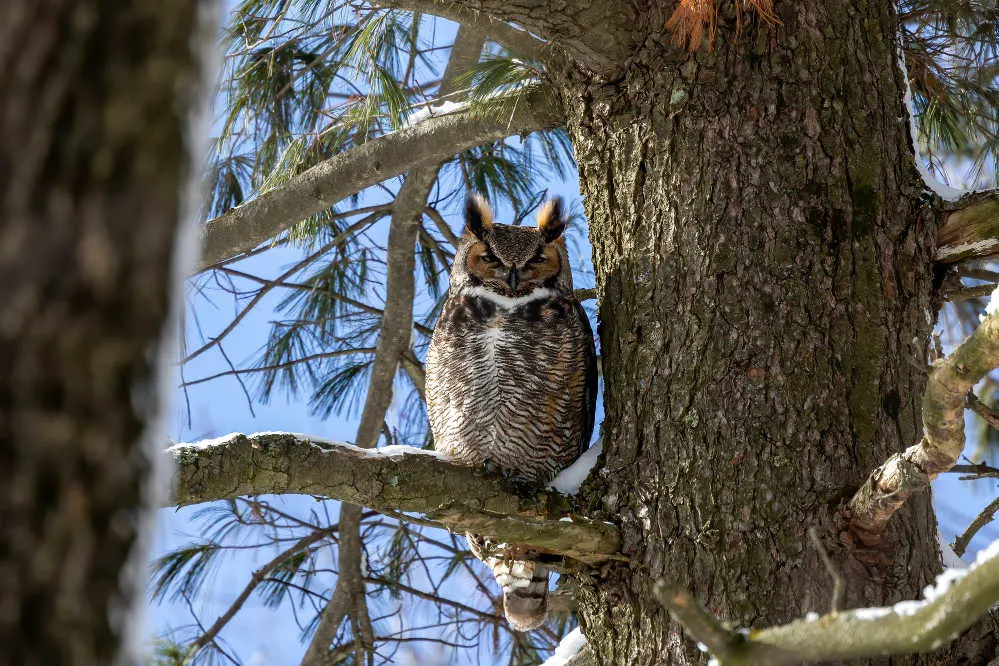
They frequent a wide range of habitats, including forests, deserts with some trees, swamps, etc., so you need to keep an eye out for them. Better yet, keep your ears sharpened for their low hooting, as these nocturnal creatures will likely be active at night.
Barn owls
The Barn owl is the most widely distributed owl globally and one of the most common species of birds. You’ll find them virtually everywhere except the polar and desert regions. This explains why the barn owl threatens bunny owners, as they often feed on small rodents, baby rabbits, lizards, amphibians, and other birds.
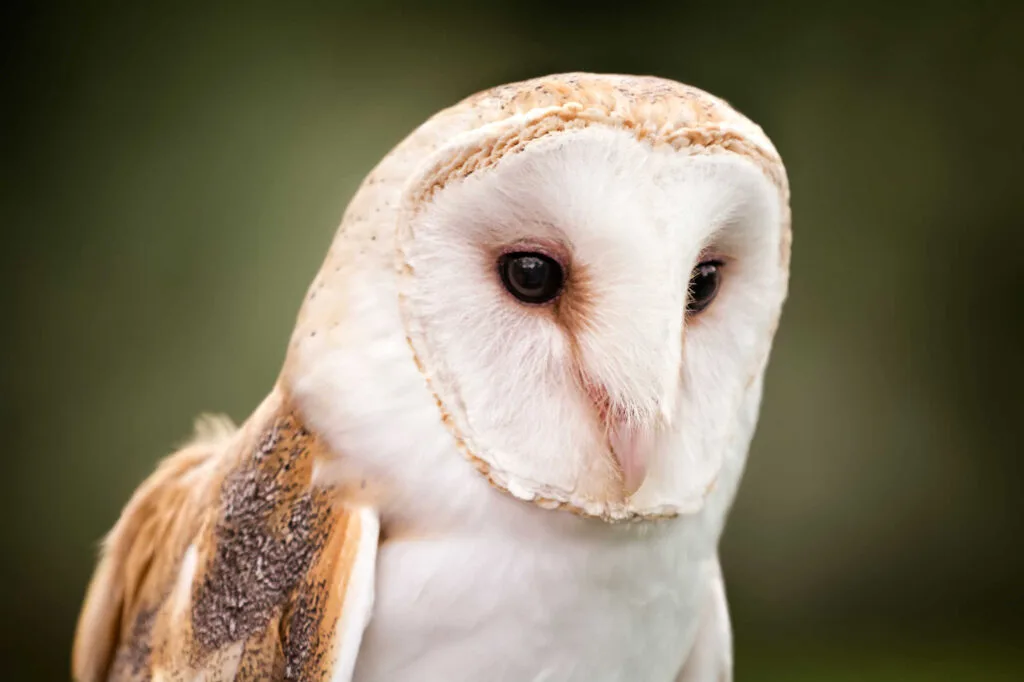
These owls are medium-sized birds with a wingspan of 39 – 49 inches (100 – 125 cm). They also have short-squarish tails, pale-colored feathers, and a heart-shaped white face, chest, and belly.
As strictly nocturnal animals, they are silent predators who can quickly swoop in and snatch up your small-sized or baby bunny if your outdoor rabbit hutch is not secure enough.
Red fox
The red fox is the largest kind of true fox you’ll find all over the Northern Hemisphere. This includes most of North America, Asia, Europe, and even some parts of North Africa. The red fox weighs 4.8 – 30.8 pounds (2,2 – 14 kg) and can run up to 31 mph (50 km/h).
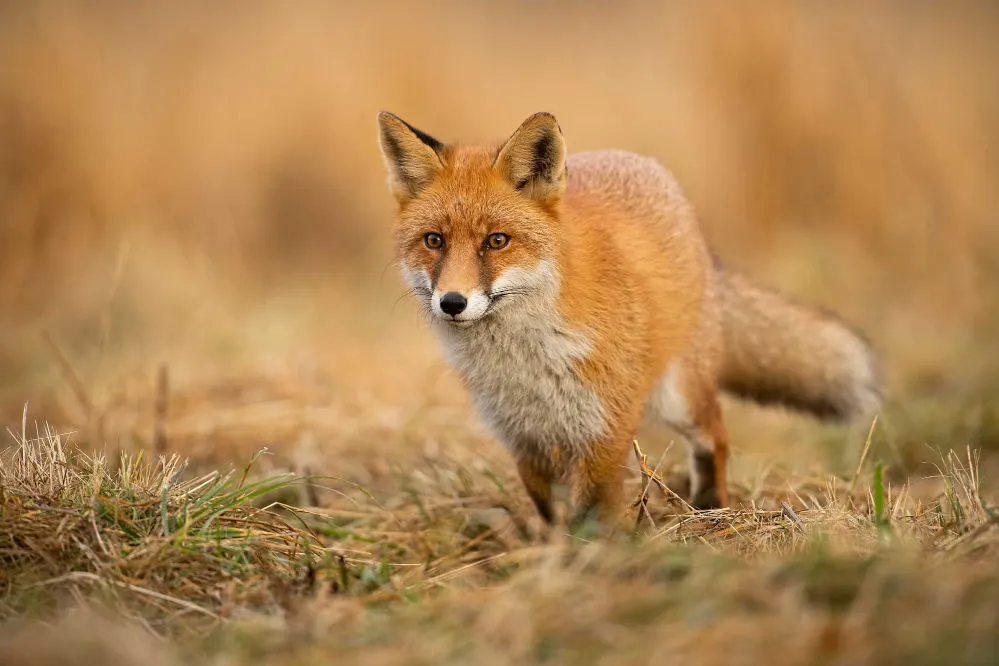
You’ll identify one by its reddish coat, bushy, white-tipped tail, black legs, white underbelly, and pointy ears. The red fox is omnivorous, whose favorite foods include squirrels, hares, eggs, birds, muskrats, insects, and vegetation. This doesn’t exclude rabbit populations, though, as this fox has a highly adaptable diet and will feast on bunnies if given the opportunity.
Red-shouldered hawks
The red-shouldered hawk is a medium-sized bird of prey found in North America and parts of Central America. They are typically present along the California coast, where crayfish serve as an essential food source.
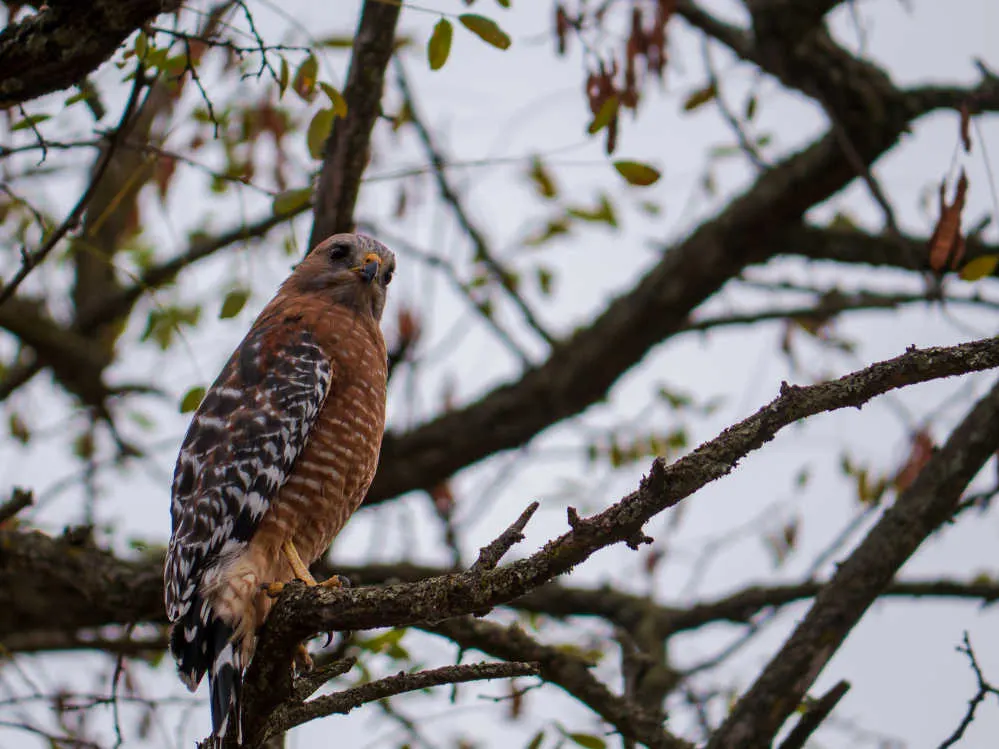
These large hawks are super fast, flying between 18 – 34 mph (28.9 – 54.7 km/h) with a 38 – 42 inch (96 – 106 cm) wingspan. They often glide with broad, rounded wings and reddish-peachy underparts. However, they are slightly smaller and slower than the red-tailed hawk; either way, they pose threats to your bunny family.
This predator also preys on various small birds, amphibians, mammals, and reptiles, including species of rabbits.
Hawk owls
Owls are no stranger to this list, and another one you need to look out for is the aggressive hawk owl. They’ve gotten their name from looking like an owl and behaving like a hawk, which means they hunt perched atop tall trees during daylight. These intimidating owls have oval bodies with round faces and yellow eyes.
By now, you also know that almost all species of owls hunt down rabbits as a preferred food source. They often tend to go for smaller bunny breeds or baby rabbits. However, the hawk owl prefers to prowl on adults, larger rabbits, and other big prey.
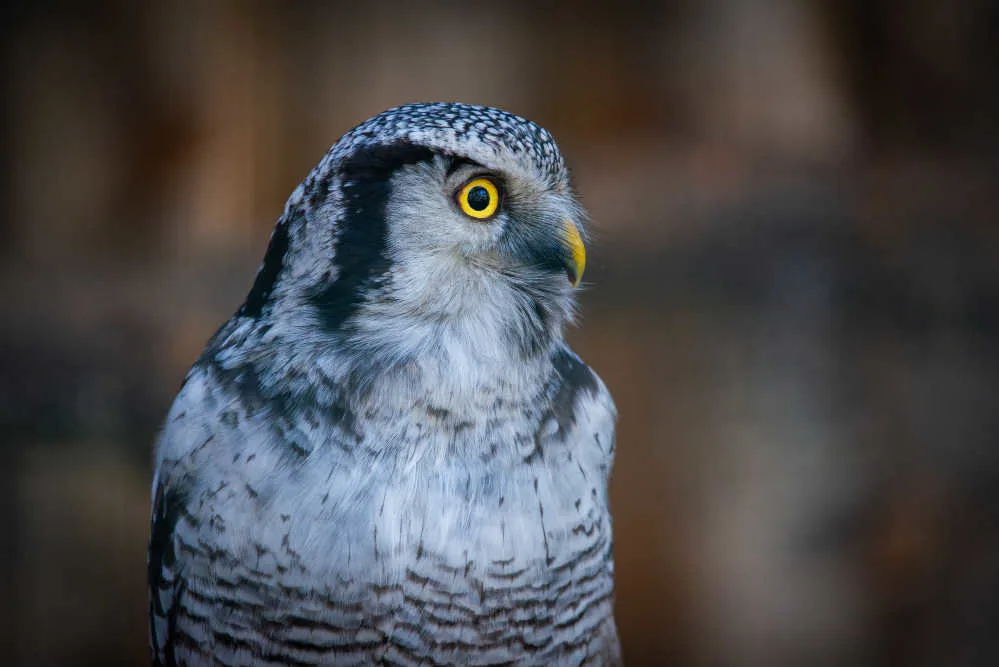
Hawk owls are primarily found in the northern latitudes but are not shy to migrate southward occasionally.
Domestic dogs
Thousands of cute videos on social media show how dogs and bunnies get along. Dogs are often gentle, patient, and protective towards other furry family members. However, most dogs have a predatory instinct to view small animals as prey.

Some dog breeds were used to hunt and catch rabbits back in the day, and they are still born with this inclination. You need to watch out for certain breeds of dogs like Jack Russell terriers, basset hounds, pocket beagles, and cairn terriers.
Dogs will likely chase and eat wild rabbits or ones that have escaped, but you can train your pup to resist its hunting instincts. These pets can live together if they’ve bonded and are exposed to each other in a safe place.
How to protect domestic rabbits from predators?
As an owner, you can do a few things to keep your beloved bunny safe from predators (or brainwashed doggos).
Invest in a safe and secure hutch
The first thing you can do to ensure your rabbit’s safety is to invest in a safe and secure hutch, whether you keep your rabbit indoors or outside.
Here are a few ways to predator-proof your rabbit’s hatch:
- Check all sides: A hutch must provide protection on all sides. Sealing off the roof prevents animals from climbing in and blocks the bird’s eye view.
- Elevate or create a barrier from the ground: Doing this can avoid digging predators from getting to your rabbit.
- Don’t use chicken wire: Animals like raccoons, hawks, and short-tailed weasels can easily reach through or tear apart chicken wire to get to their prey. Instead, use hardware cloth to keep your rabbit safe from threats.
- Make sure cats can’t get in: Cats are pretty clever at figuring out how to unlock cages, so you need to double-check that it’s cat-proof if you have a feline in your home.
Observe your rabbit’s body language
The best way to know if your rabbit feels safe is by looking at their body language. Picking up on their “spidey sense” will alert you of any nearby danger, especially if you have kits or allow your bunnies to roam freely at times.
Protecting your bunny from other pets/animals at your home
Do some research on the pets you have at home before adopting a bunny. As mentioned before, domestic cats and dogs might have a natural instinct to hunt and attack rabbits. However, all three parties can get along just fine with a proper introduction and good bonding.
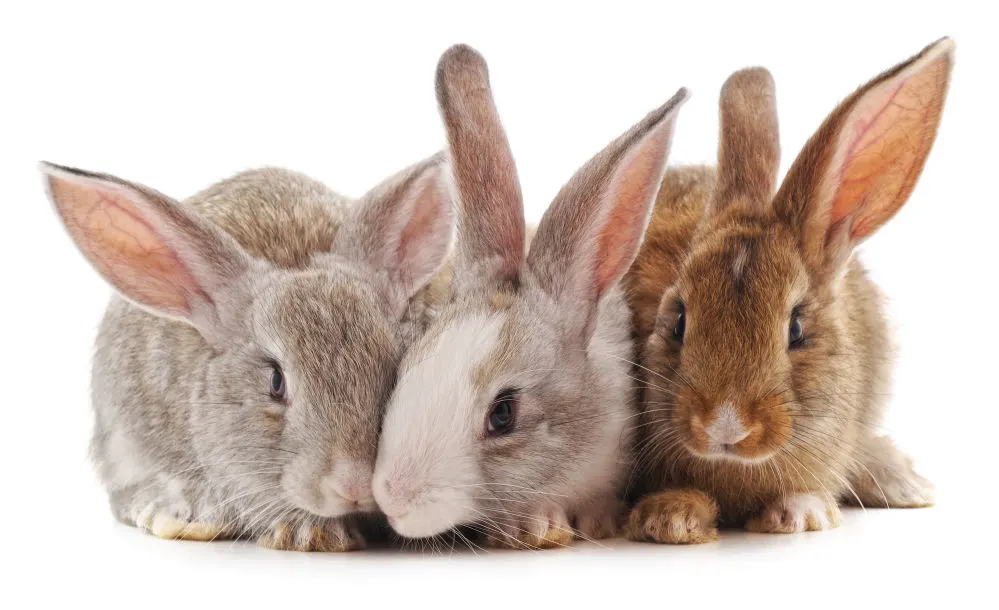
If you have exotic animals like lizards or snakes, then it’s best to keep these pets separately. Always double-check your rabbit’s hutch to ensure other potentially harmful animals can’t access your fuzzball when you’re not around.
Pro Tip: Adopting your pets at the same time will be the best way to ensure excellent exposure and bonding between your pets since they grow up together.
More handy tips to keep your pet rabbit safe
- Use motion-detecting lights or sprinklers to keep predators at bay.
- Utilize electric fencing to help prevent predators from returning to your home.
- Clean up any rabbit food lying around that might attract dangerous animals to your rabbit’s pen.
- Use a night-vision camera to learn more about the predator stalking your rabbit. This way, you’ll know exactly what you’re dealing with and have better solutions to chase away the pesky animal.
Wrapping up what animals eat rabbits
Now you have more of an idea of the types of animals that feed on rabbits. Yes, there are tons more predators out there. The main things to look out for are large birds like hawks, owls, and wild animals in your area.
Be extra cautious if your bunny is small or has an outdoor hutch, especially if you have any animals (or similar species) on this list near you.
Next Read: When do rabbits sleep?
Steph Dyson is a travel journalist by trade but a lover of all small pets. She’s been a pet mum to everything from gerbils to guinea pigs, rabbits to hamsters, and fish to dogs of all shapes and sizes. She wants to share her years of experience with small pets and make Small Pet Guides the go-to website for pet owners seeking information and care advice.

